Ray Hahn
Violins
In north-central Italy is Cremona. Since the early 16th century, the traditional craft in the village has been violin making. Primarily, the craft was perfected by three families, each of which has, to this very day, a reputation for precision, exactness, and excellence.
Quite a long time ago the Amati family put a sign in their shop window that read, “We make the best violins in Italy.” A few days later the Guarneri family, who lived right around the corner put a bigger sign in their shop window that claimed, “We make the best violins in the world.” Not to be outdone by their competitors, the Stradivarius family answered the claims of their neighbors with a sign that spoke volumes but seemed to understate their intent, it read, “We make the best violins in Cremona.”
The Amati family flourished as violin makers for just over two centuries (1538 to 1740). There are several Amati instruments (including some by Nicolo Amati, the family’s patriarch) in museums around the world and most are valued at six- to seven-hundred thousand dollars. There are no known Amati instruments in general use.
Guarneri is a name made famous by Jascha Heifetz, Isaac Stern, Pinchas Zukerman and Joseph Silverstein. Silverstein was a Detroit born, Curtis Institute educated violinist who after graduation played with the Houston Symphony, the Philadelphia Orchestra, the Denver Symphony, and in 1955 joined the Boston Symphony Orchestra. He later served as concertmaster of the BSO until his retirement in 1984. His instrument was a 1742 Guarneri del Gesu violin.
Guarneri violins are instruments which on average have a stronger range of sound.

Antonio Stradivari, by Edgar Bundy, 1893:
Stradivarius could be the most famous of the Cremona violin makers simply because they have received the most press. The family made a full range of string instruments. Antonio Stradivari claimed that no other instrument could match the sound of his violins. He may well have been correct. The Strad-sound has been a topic of many disputes that never came to resolution. The patriarch was notorious for his assignment of his children and grandchildren at birth to be a violin maker, a viola maker, or a cello maker, allegedly all based on the size of the infant’s hands.
If you could be inspired to collect violins, be prepared to pay millions of dollars for one that may come up for a public sale within your lifetime.
The violin is among the oldest of the musical instruments in use today. Through the centuries it enjoyed a few modifications in the 18th and 19th centuries to improve quality of sound and sound projection, but the violins owned by most serious musicians today are essentially unchanged from 500 years ago.
Technically speaking, the violin is the smallest and consequently the highest pitched (soprano voiced) wooden chordosphone or four-stringed instrument of the violin family. The others are the viola (alto voiced), violoncello (commonly shortened to “cello” and tenor voiced), and the standing or double bass (bosso voiced).
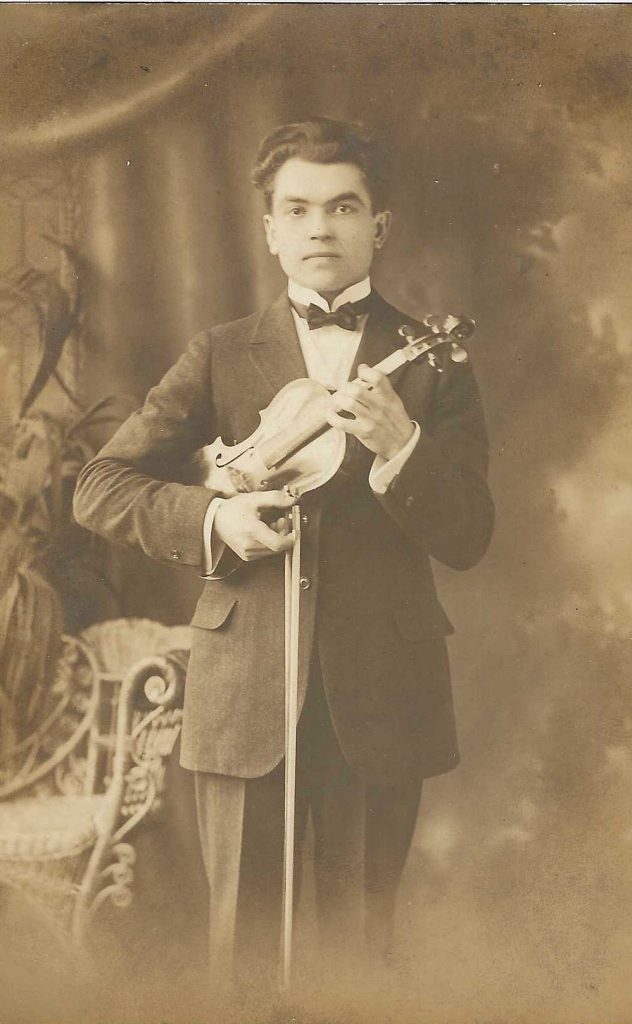
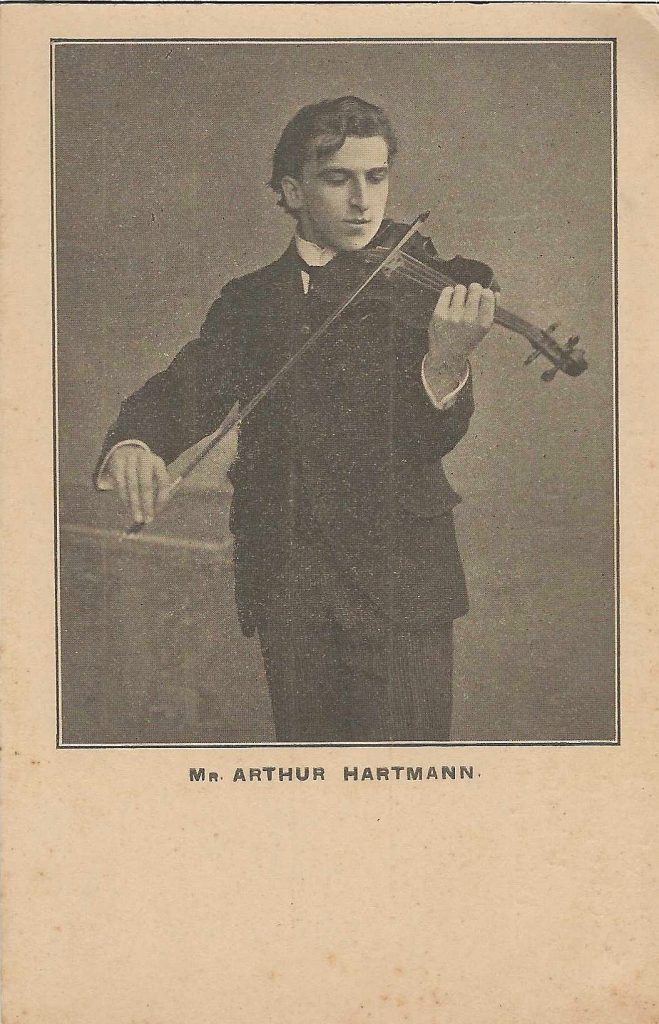
The violin is most commonly played by pulling a bow across the strings of the instrument. In the hands of the inexperienced the sound can be raucous, harsh, and annoying, but the experienced player can evoke a long range of emotion which is often credited (for unknown reasons) to one of the three schools of violin makers: the Brescia school (from 1510), the Cremona school (from 1550), and the Vienna school (from 1505).

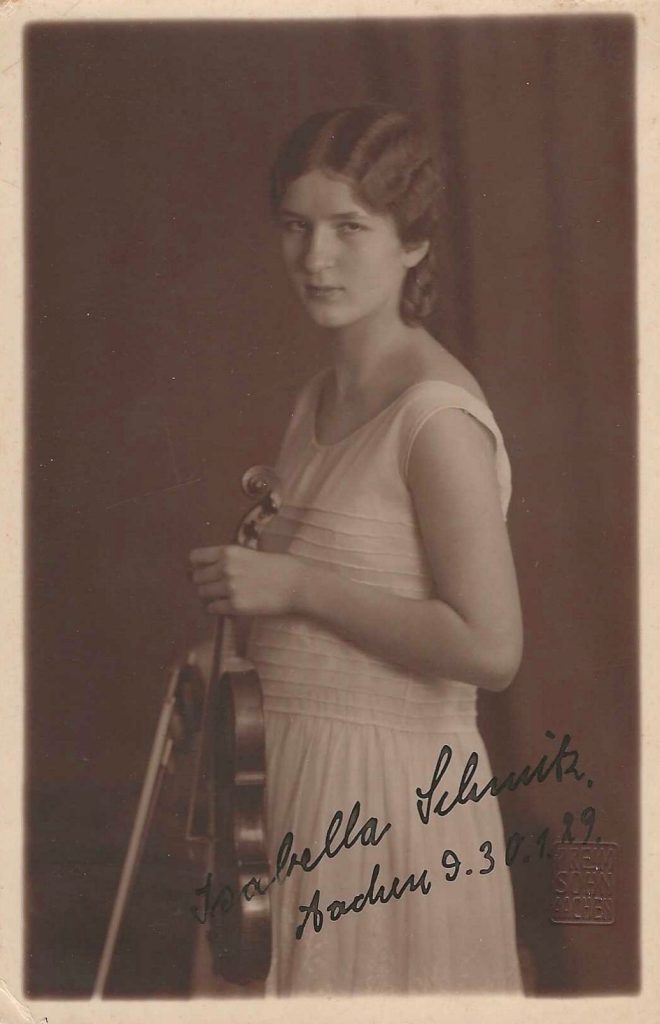
There are volumes of myth and legend about violins and violin players, one of particular note is the unremembered biblical scholar who said, “Heaven must have not only choirs of angels, but bands and orchestras, too!”
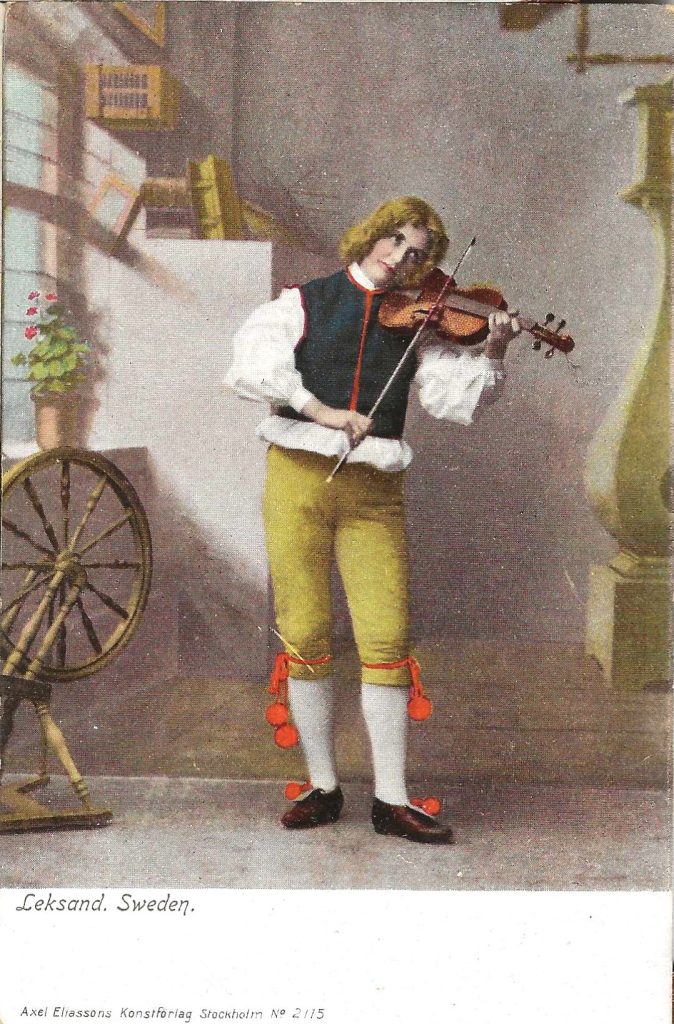
Though Saint Cecilia is the patron saint of musicians, this patronage finds its origin not in her musical abilities but in a tradition that musicians played at her wedding. There are, however, other saints who were instrumentalists, vocalists, and composers who may have been violinists.
Postcards of violinists are not rare. There are countless numbers of children who took violin lessons and were proud to have been photographed and had their pictures sent to grandparents, aunts and uncles, and even neighbors on real photo postcards.
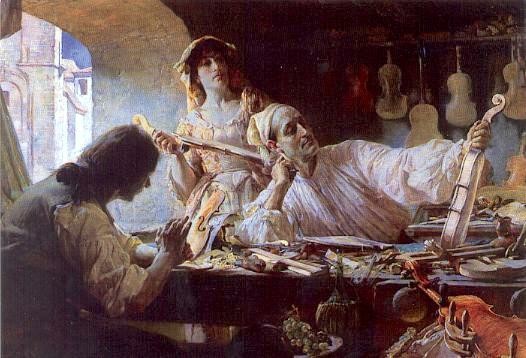
Our house was always full of music but, sadly, none of us had any particular talent for stringed instruments. Perhaps I can look forward to a future article about tubas on postcards.
One theory holds that the unique sound of the Stradivarius violins is due to the fact they were made of wood that had a more consistent density than the timber produced by more recent trees.
Great article, Ray! As a long time “double bass” owner and player I enjoyed learning more about our higher pitched cousin. Instruments bring so much joy and relaxation to those who have and play them.
I enjoyed the article – thanks! I collect what postcards I can that relate to classical music, including those depicting violins or violinists. Such cards (in my experience) tend to be divided between North American RPPCs of lesser-known adult performers and children (as you mention) and lithographed art cards from Europe.